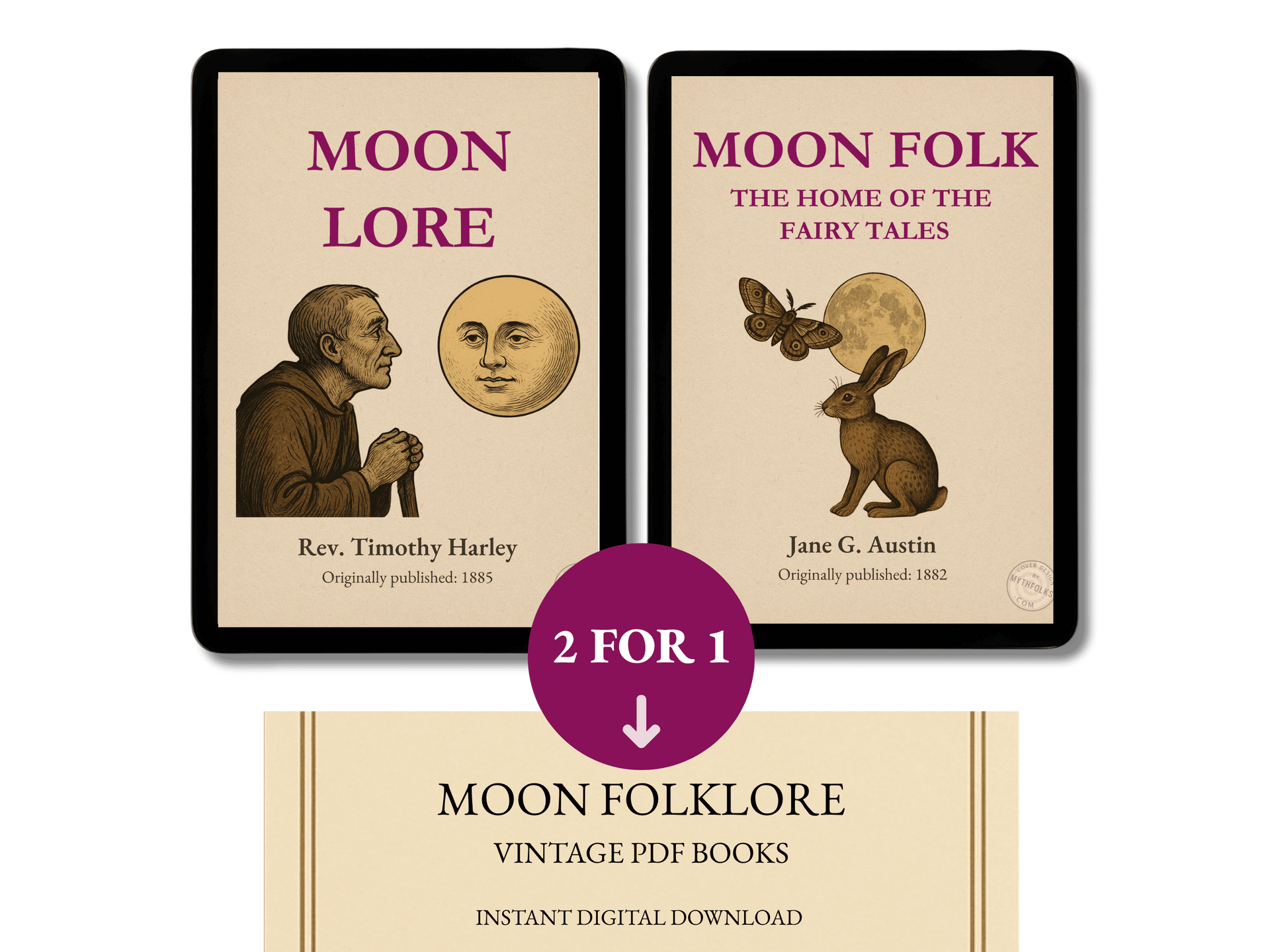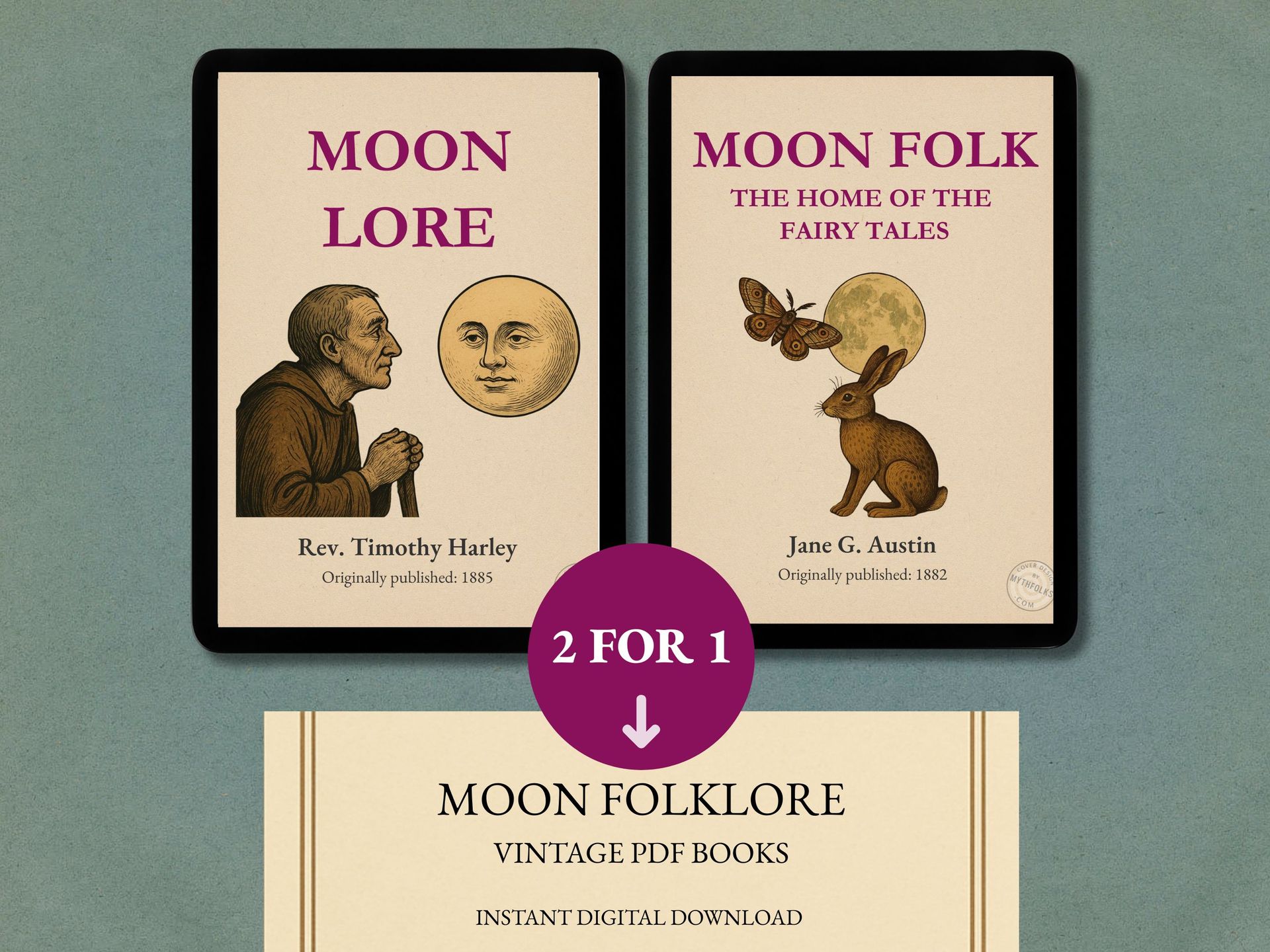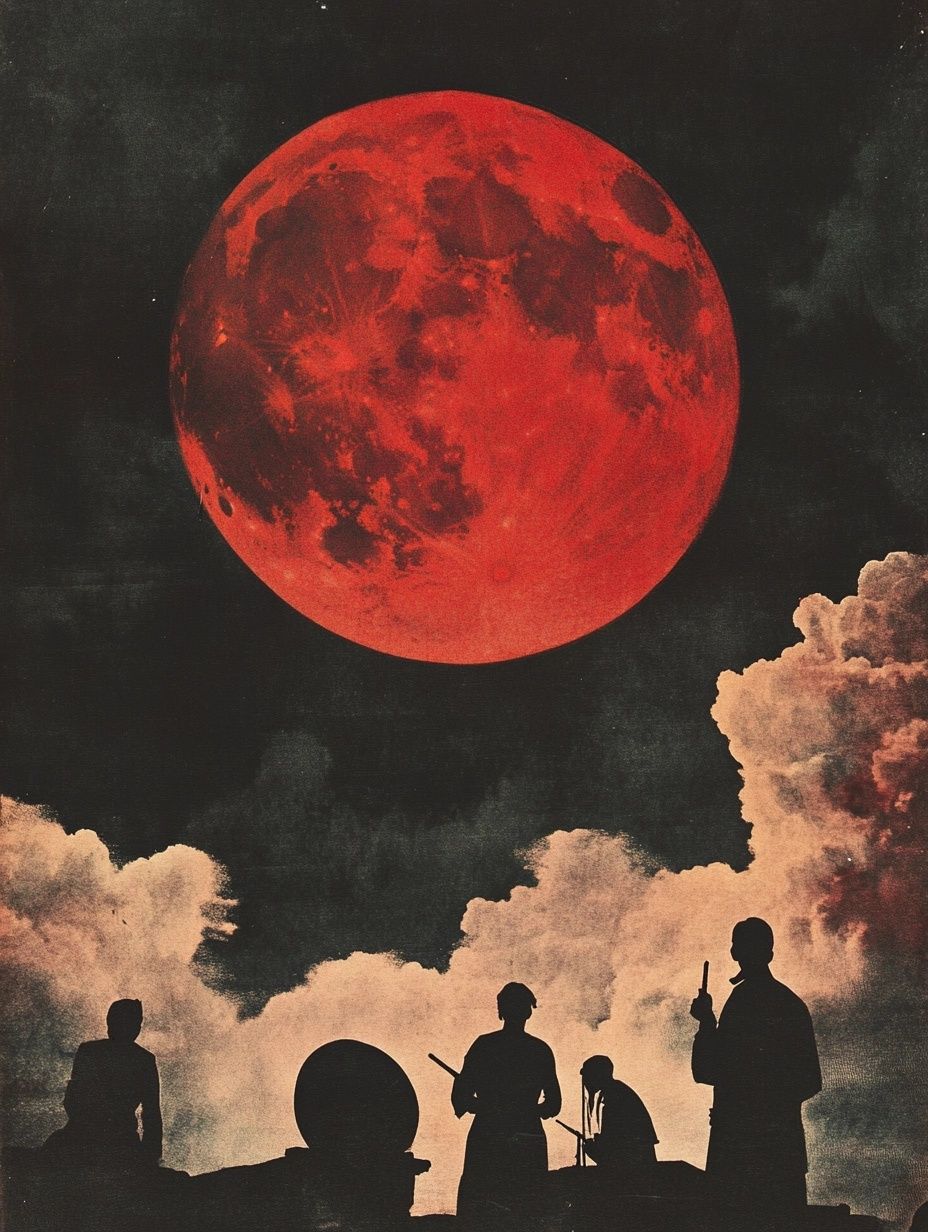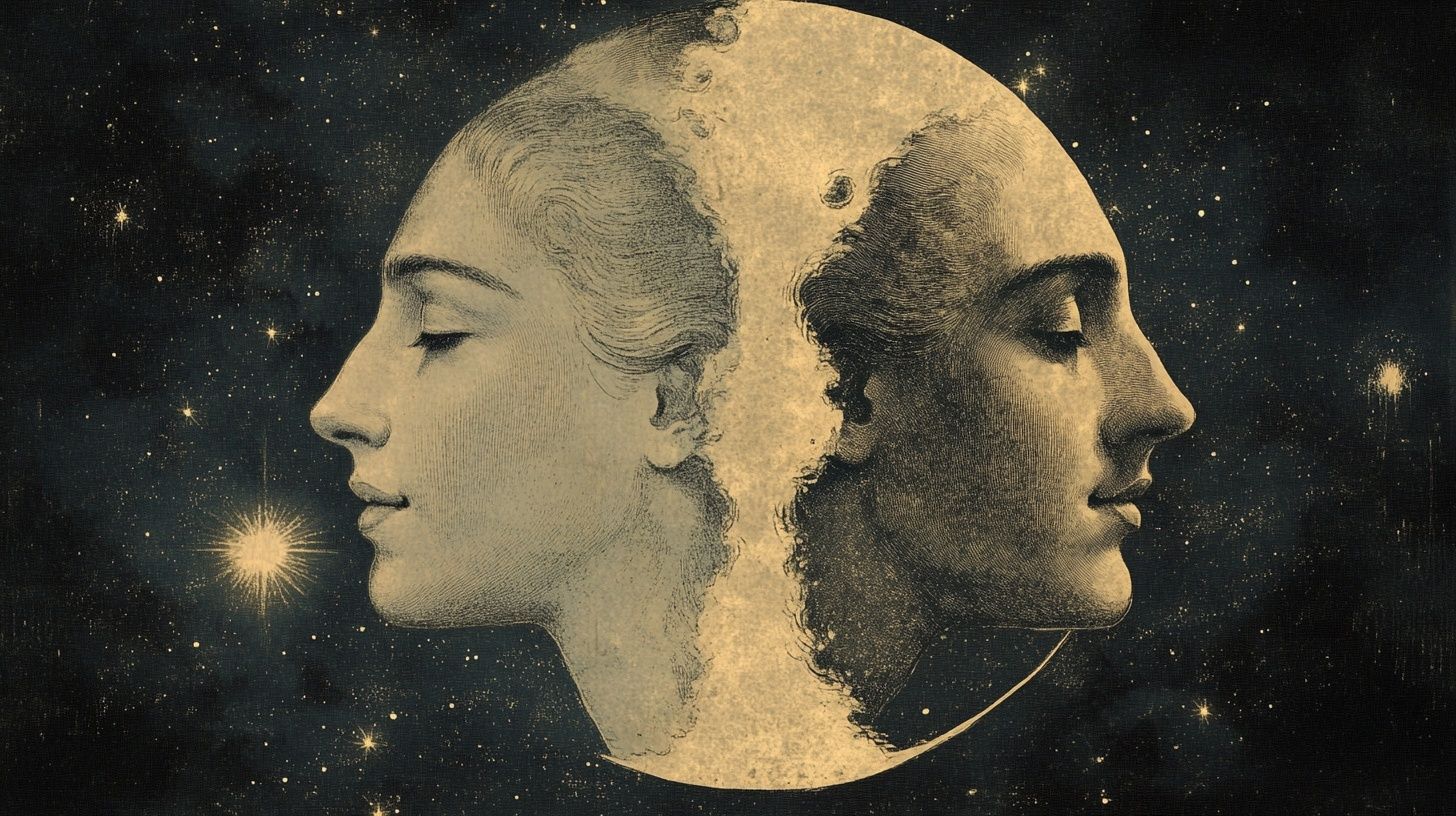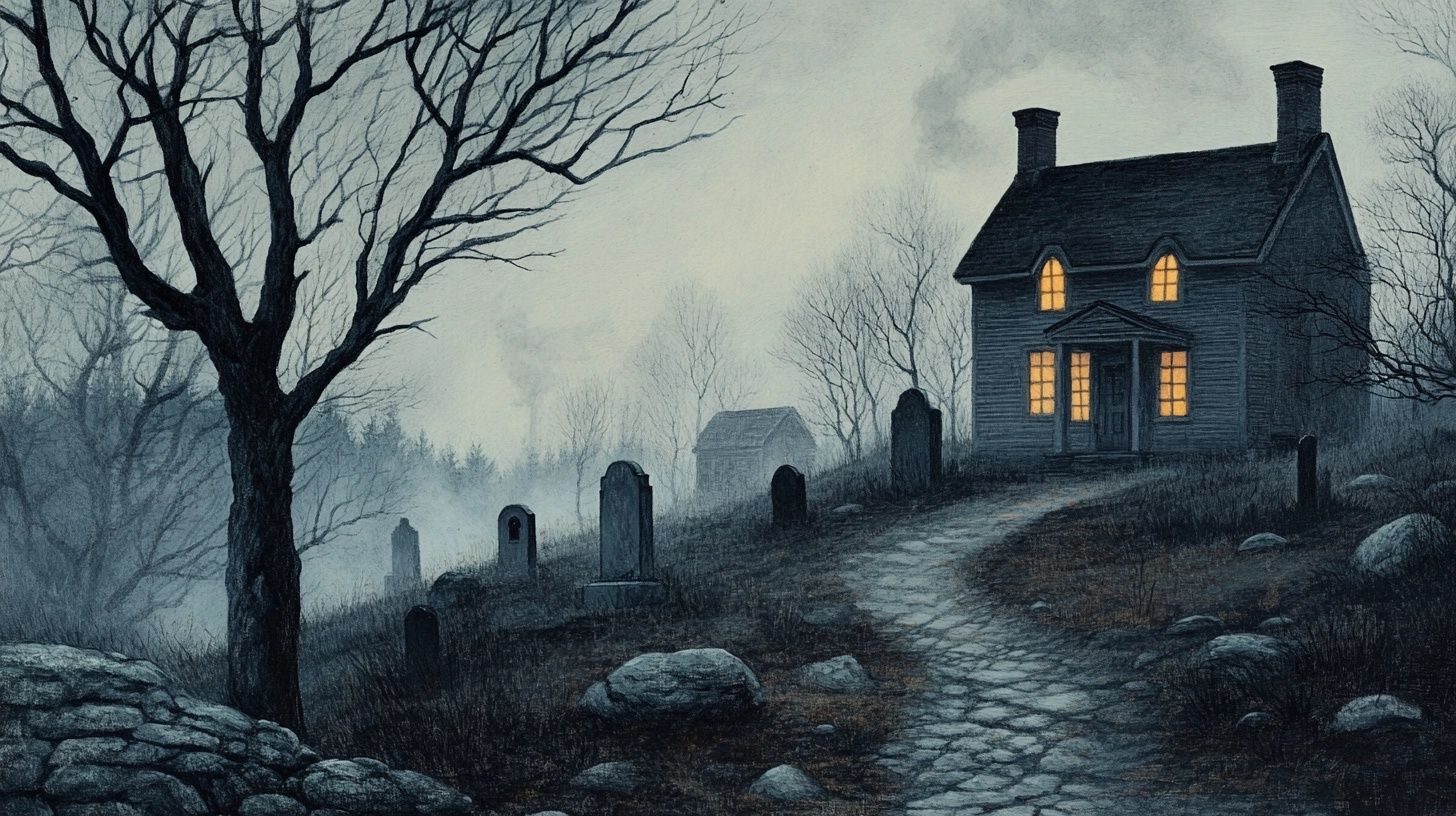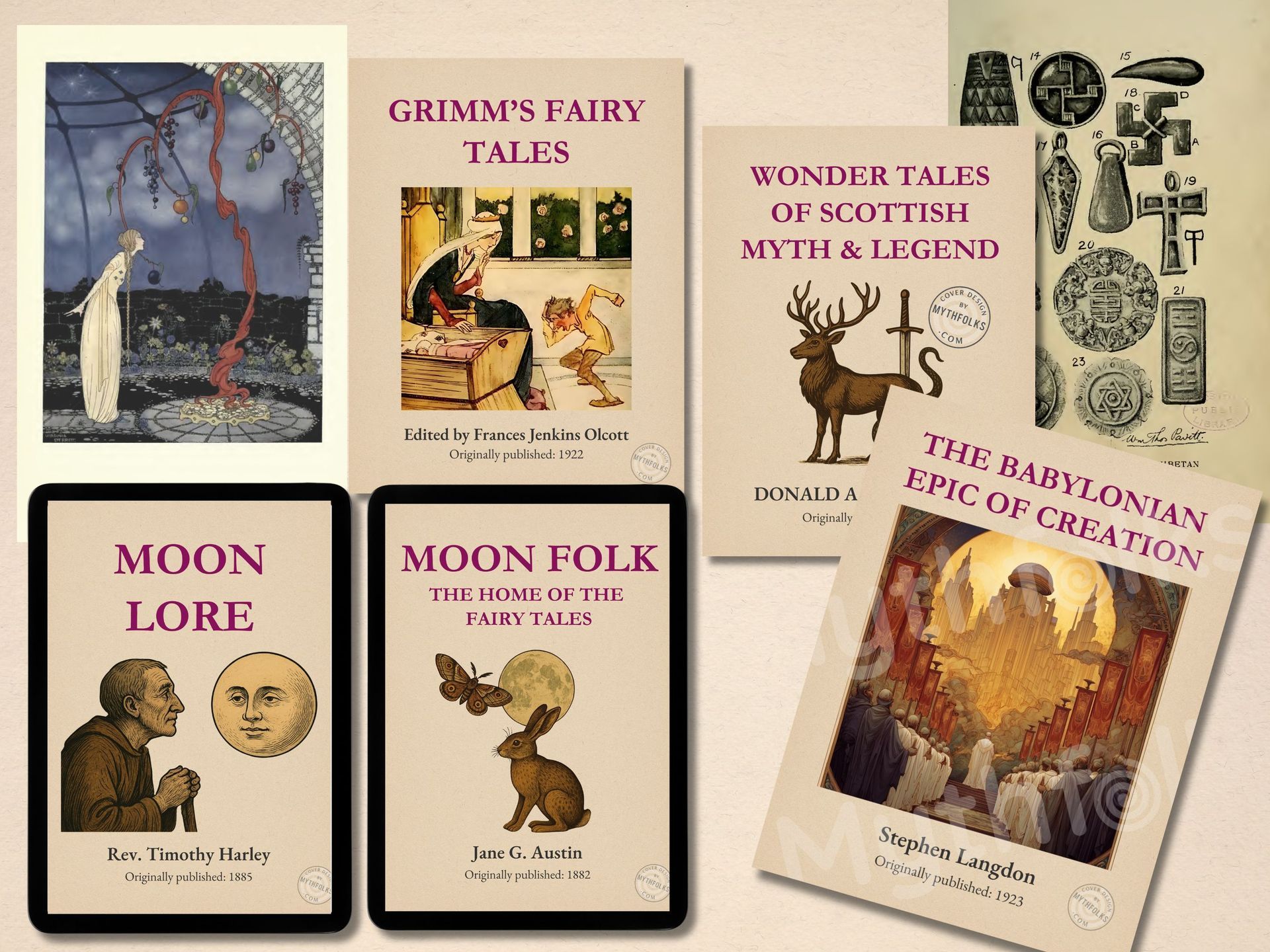Why does the moon cast such a spell? Tracing the ancient folklore roots of modern moon magic
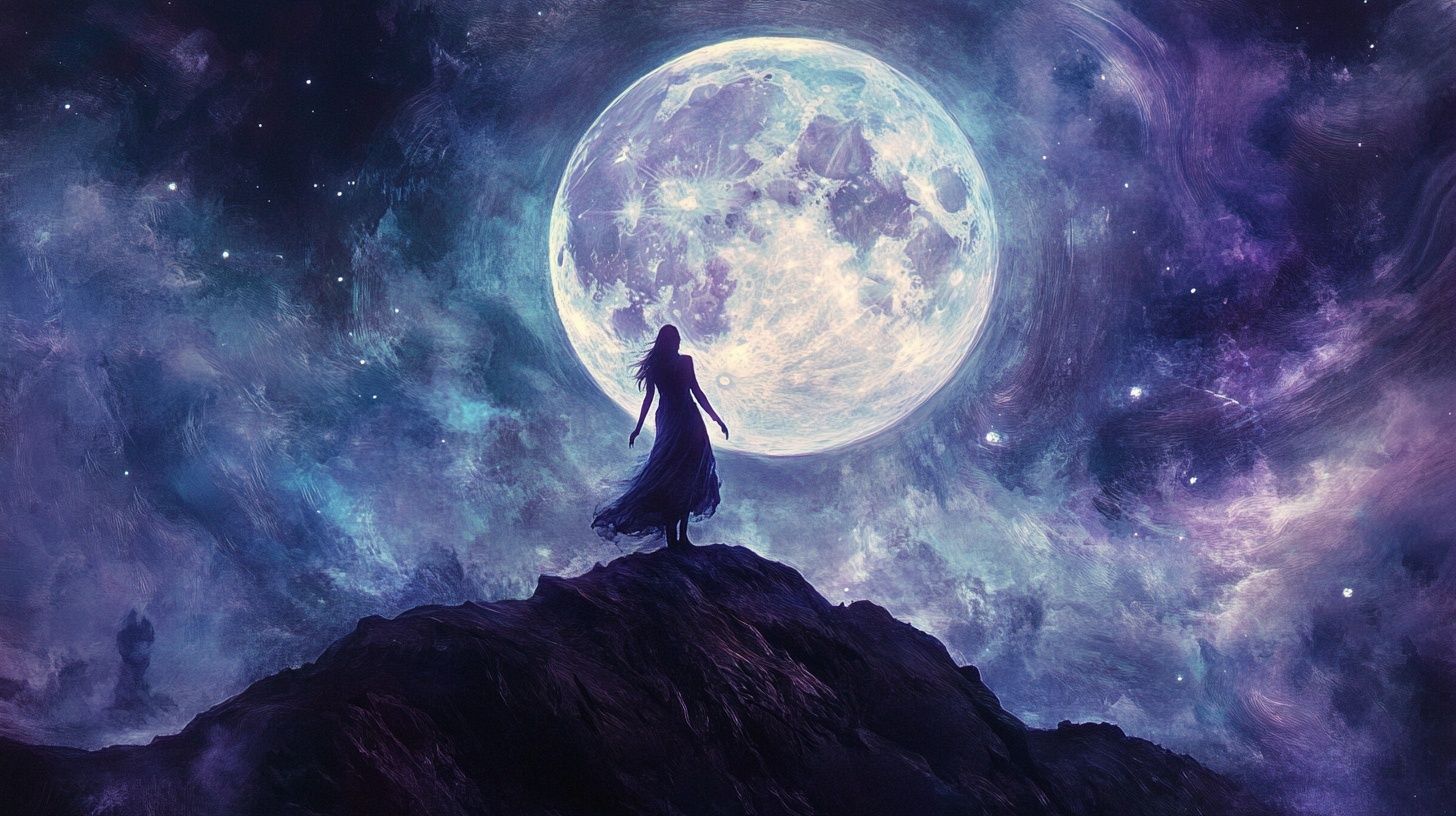
In this article:
1. The moon phases in ancient beliefs & their magical significance:
- The 4-part moon phase system
- The 8-part moon phase system & Triple Gooddess archetype
2. Ancient lunar magic & rituals:
- Mesopotamian lunar magic & rituals
- Ancient Egypt lunar magic & rituals
- Greco-Roman lunar magic & rituals
- Celtic lunar magic & rituals
- Indigenous N. American lunar magic & rituals
Whether it’s the mystery of the night or just the mystery of the universe, there is something undeniably magical about the moon.
For millennia our ancestors have been passing along lunar myths & legends that have profoundly influenced spiritual and magical practices across cultures. From the earliest civilizations to today's Wiccans and other modern practitioners.
I have a deep appreciation for the role of magic and witchcraft in folklore, so here is a dive into the history of ancient moon magic and rituals, how they evolved over time and how they've influenced modern practices today.
Updated: 22nd Jul 2025
Author: Sian H.
The moon phases in ancient beliefs & their magical significance
For our earliest civilizations, the moon informed the world's first calendar, its predictable phases guiding everything from planting crops to hunting seasons. This reliable rhythm led people to believe the moon influenced destiny and fate, hence since the dawn of time, the moon has been considered "magical".
It's not surprising then, that the moon's phases have historically given rise to various systems for understanding its influence, all deeply rooted in folklore. The Four-Part Moon phase is most common due to its direct link to visible changes and practical applications in ancient agriculture and daily life, forming the intuitive backbone for many folk magical practices.
The 4-part moon phase framework
The moon's changing face, from a sliver to a full circle and back, was seen as a cycle of renewal and transformation. Each phase held unique meaning and was believed to be ideal for specific magical intentions. These ancient ideas can still be seen today in Wiccan, modern (Neo-)Pagan and other spiritual practices.
The New Moon
The New Moon - when the moon is barely visible or completely dark - symbolized fresh starts and hidden potential. It was a time for quiet reflection and setting intentions for the future.
- Celtic & Irish folklore: A child born under a new moon was thought to have good health and wealth. People would offer prayers upon first seeing the new moon. Seeing it over the right shoulder was lucky; through glass, unlucky.
- Ancient Egypt: The New Moon Festival (psḏntyw*) was important, marking the start of a new lunar month and the healing process of the Eye of Horus (more on this in a later section).
- Mesopotamia: The new moon was considered a good time for rituals against witchcraft.
- Greek divination: In Arcadia, girls would throw a handkerchief on the ground with an incantation when seeing the new moon, then sleep with it under their pillow, hoping to dream of their future husband. Young men used the March new moon for dreams about their year ahead.
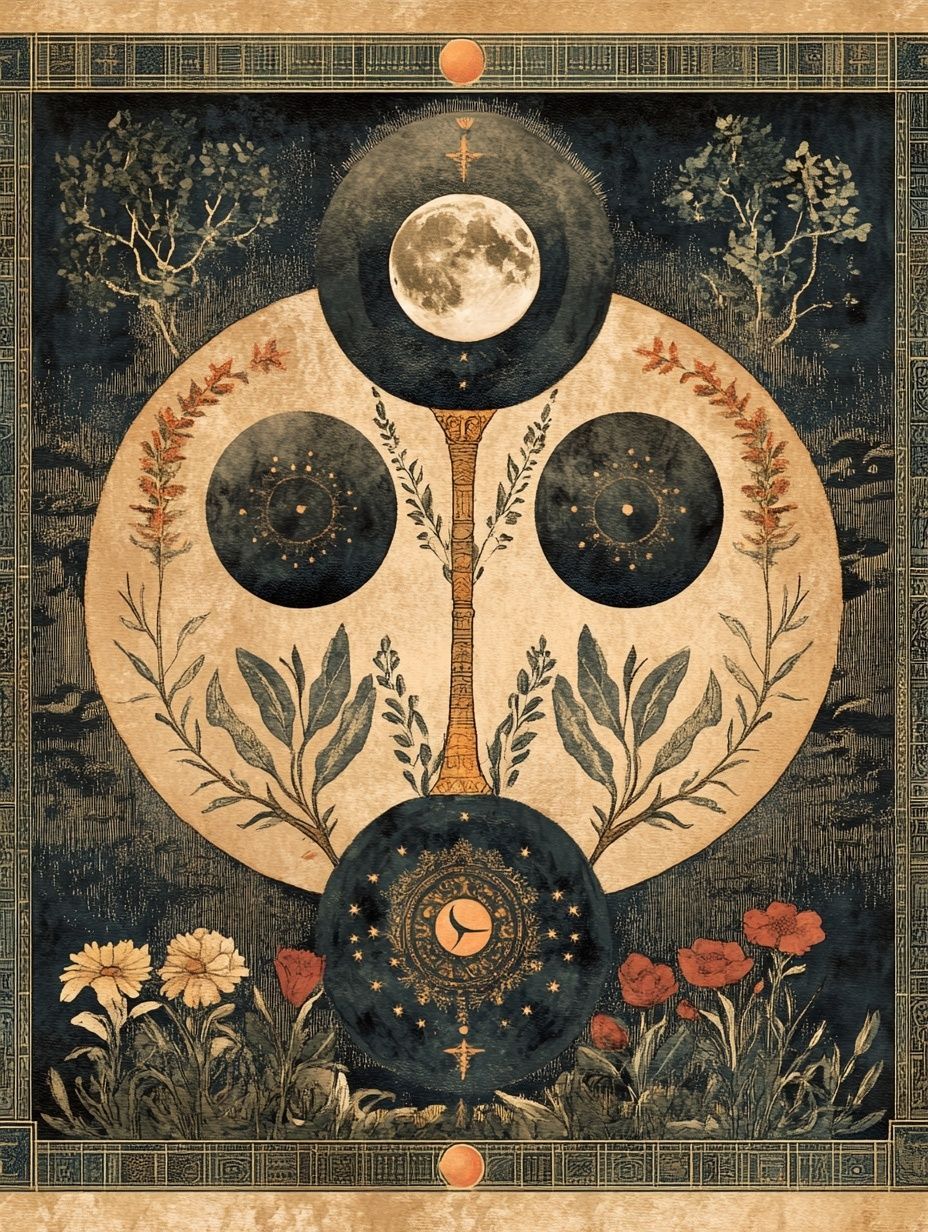
*How do you pronounce "psḏntyw"?
I couldn't let this one pass! No one knows the exact pronunciation of ancient Egyptian words like "psḏntyw" (often referring to the new moon or first day of the lunar month) as that spoken language is lost to time. But, Egyptologists have developed a commonly accepted reconstructed pronunciation and apparently psḏntyw is often conventionally anglicized as pesedju.
So, while not an exact modern English equivalent,
pesedju is the most common way you'll hear it pronounced in an academic or Egyptological context. The sound of the 'ḏ' is like the 'ch' in 'church' or 'j' in 'john', but it's a "tjy" sound that can be hard to describe precisely without hearing it.
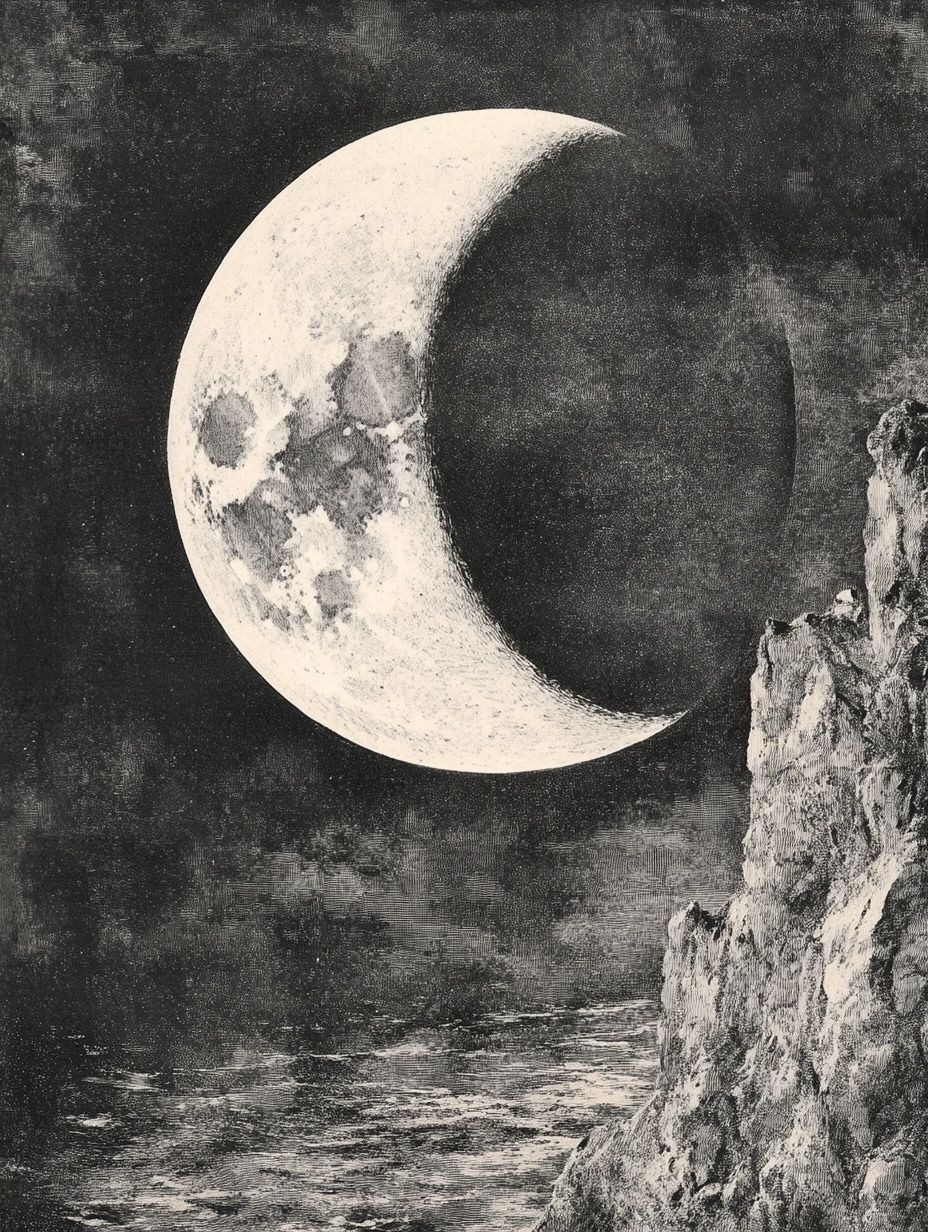
Waxing Moon
As the moon grows from a sliver to nearly full, it symbolizes youth, growth and new opportunities. This period was used for "positive" magic, aiming to attract things like money, jobs or love.
- Celtic & Irish Folklore: Any work or business started during the waxing moon was believed to succeed. This included planting crops, cutting thatch for roofs and slaughtering animals (meat would "swell in the boil"). Marriages were thought to be more successful if celebrated during this phase. Cutting hair during a waxing moon was believed to make it grow faster (I remember hearing this one as a child).
- Ancient Greece: Farmers planted vines and grain at the start of the moon's cycle, believing they would grow as the moon did.
Full Moon
The Full Moon, a bright circle in the sky, represents culmination, abundance and peak power. It was a time for powerful rituals of manifestation and releasing negative energy.
- Native American Traditions: Full moon ceremonies were common for community gatherings, releasing unwanted energies, and fostering intuition. The "Moon Dance" in Mexico was a three-day full moon ceremony for healing and connection to Earth. Women brought water to ceremonies to be blessed by Grandmother Moon, turning it into "moon water" for medicine (more on this later).
- Ancient Egypt: The full moon marked the completion of the Eye of Horus's restoration and was a time for purification (possibly for mummification ceremonies).
- Chinese traditions: Offerings were made to ancestors during the full moon.
- Hindu traditions: The full moon day ("Purnima") was full of promise, celebrated with fasting, prayers to Lord Vishnu and ritual river dips for purification.
- Babylonian belief: The moon god Sin was associated with the underworld as a divine judge, and lunar eclipses were believed to be caused by evil utukku (demons) surrounding him.
- European witch folklore: Witches were thought to gather and cast spells during the full moon, believing its light boosted magical power.
Waning Moon
As the moon shrinks after its full phase, it symbolizes letting go and introspection. This phase was used for "baneful" magic - sending away negative influences like bad habits, debt or illness.
- Celtic & Irish Folklore: Work started during the waning moon was less likely to succeed. However, it was believed to help body sores shrink and warts disappear. So there's that!
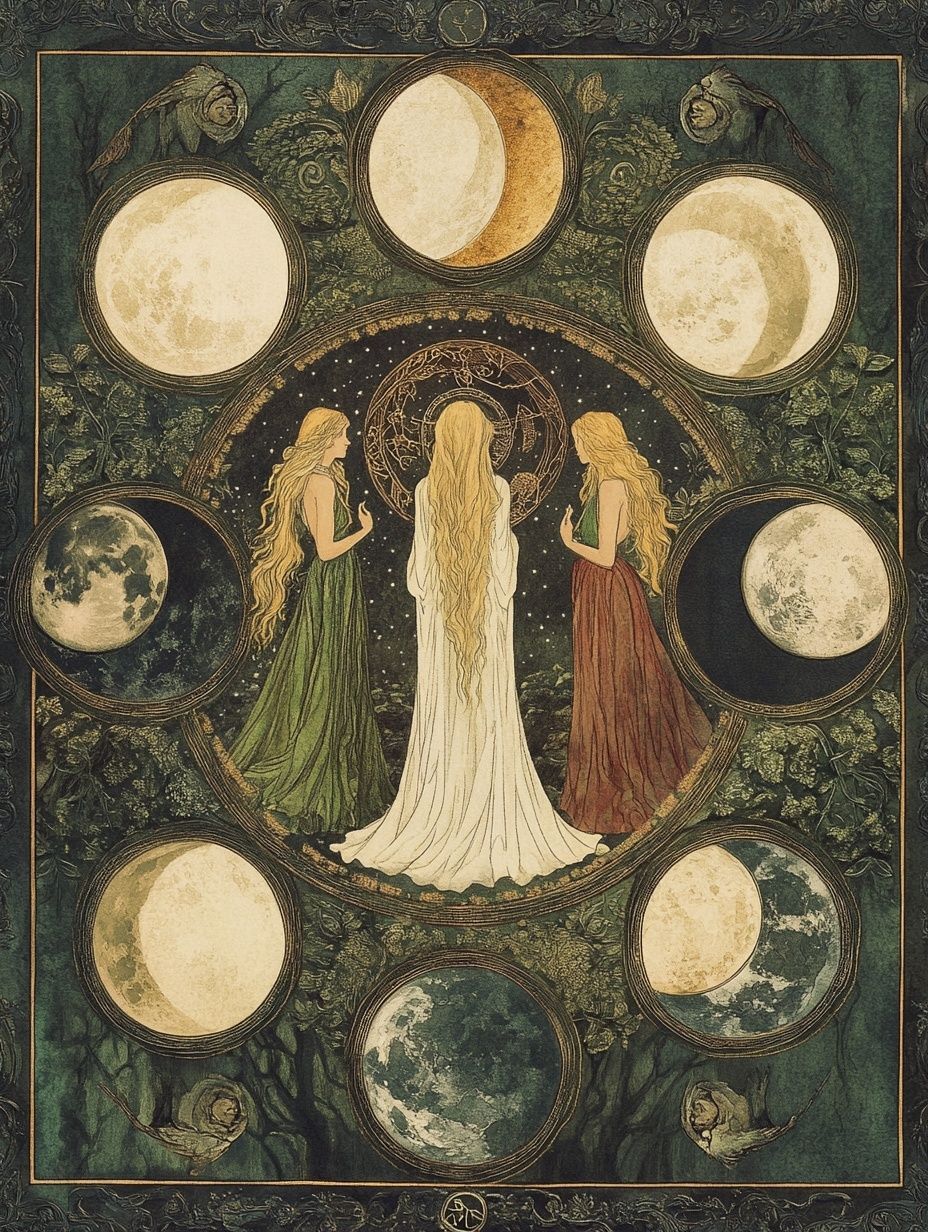
The 8-part moon phase & Triple Goddess archetype
The 8-Part Moon Phase Tradition, while less common than the 4-part, offers a more granular division of the lunar cycle, originating from sophisticated astronomical observations in traditions like the Islamic Lunar Mansions (28 divisions used for precise astrological and talismanic timing).
Complementing these, the Triple Goddess Archetype (Maiden, Mother, Crone) is a modern concept popularized in 20th-century Neopaganism, interpreting the moon's waxing, full and waning phases through the lens of feminine life stages and divine power.
Essentially, the Triple Goddess idea tells a
big, ancient story about the moon's changes, like it's going through youth (Maiden), adulthood (Mother) and old age (Crone). While the 4 and 8-part moon systems are like how-to guides that give you more and more specific ways to use the moon's changing energy.
Enjoying this article? Discover original moon myths & legends in my vintage Moon folklore ebook bundle and get
2 for the price of 1!
(Clicking the link will open the Mythfolks Etsy shop in a new tab.)
Ancient lunar magic & rituals
As is evident from the above, moon magic was deeply embedded in ancient societies as a way to understand and influence the world. These practices were systems of knowledge, blending observation, belief and practical action.
Mesopotamian lunar magic & rituals
In Mesopotamian mythology, the moon and other celestial bodies were seen as divine communicators, revealing the gods' will. This led to the concept of "astral science," combining astronomy, astrology and a deep respect for religion.
- Celestial divination: Diviners interpreted the "writing of the firmament" (stars) for kings and the state to predict the future.
- Magic's purpose: Magic wasn't considered separate from religion; it was used to fight negative influences from ghosts, demons and sorcerers and to protect against curses.
- Anti-witchcraft rituals: The new moon was a favored time for these rituals. Texts like the Maqlû series (a magical text recorded on 9 clay tablets) describe rituals involving invoking "gods of the night," leaving purifying water under stars and burning effigies of witches to reverse their magic.
- Exorcism: In Mesopotamia,
ašipu were highly respected experts in various forms of magic, diagnosis and healing. They were often referred to as "exorcist-priests" and used rituals, incantations and divination (like examining animal livers) to combat evil spirits, witchcraft and diseases, essentially acting as spiritual and medical practitioners. Ašipu were crucial in reading celestial phenomena to help them perform their tasks.
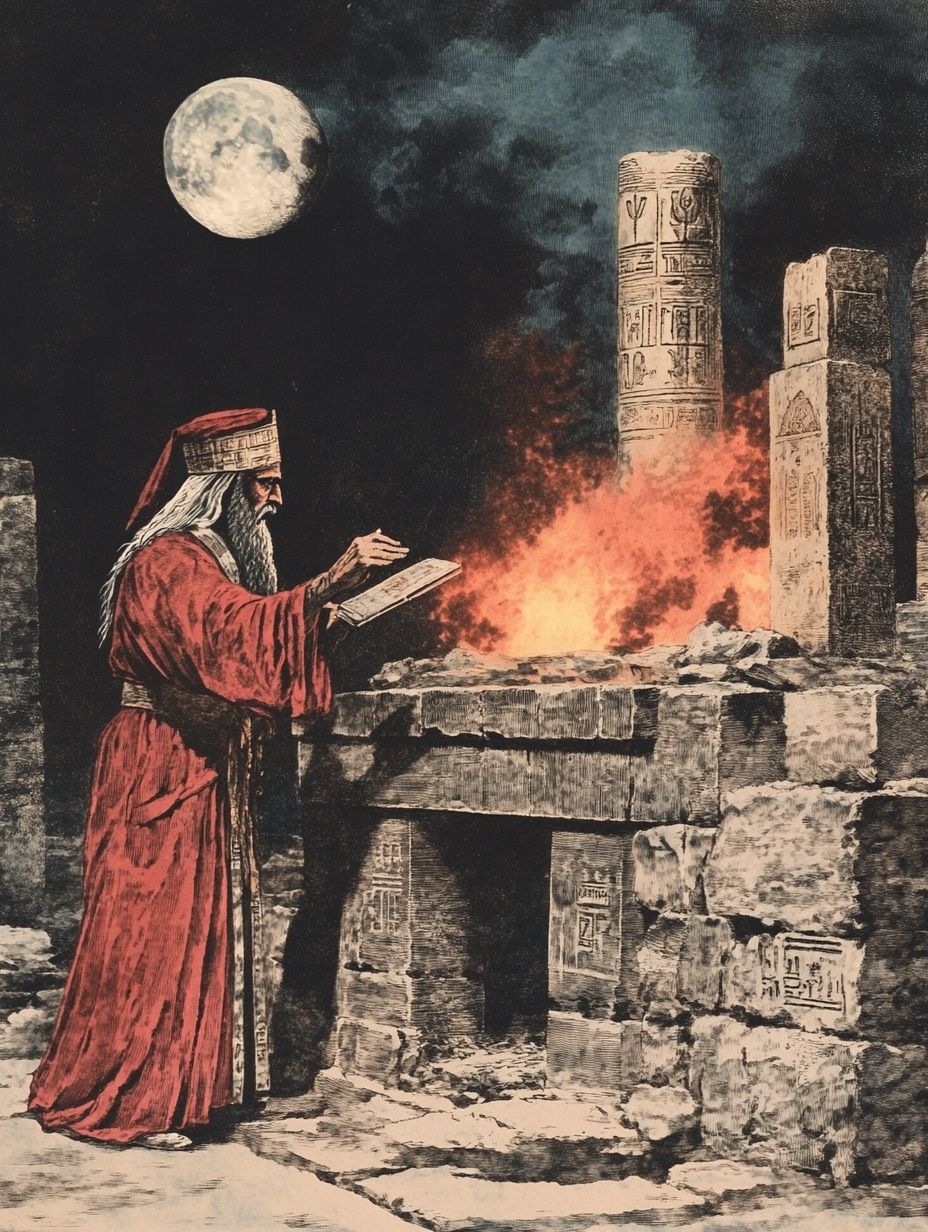
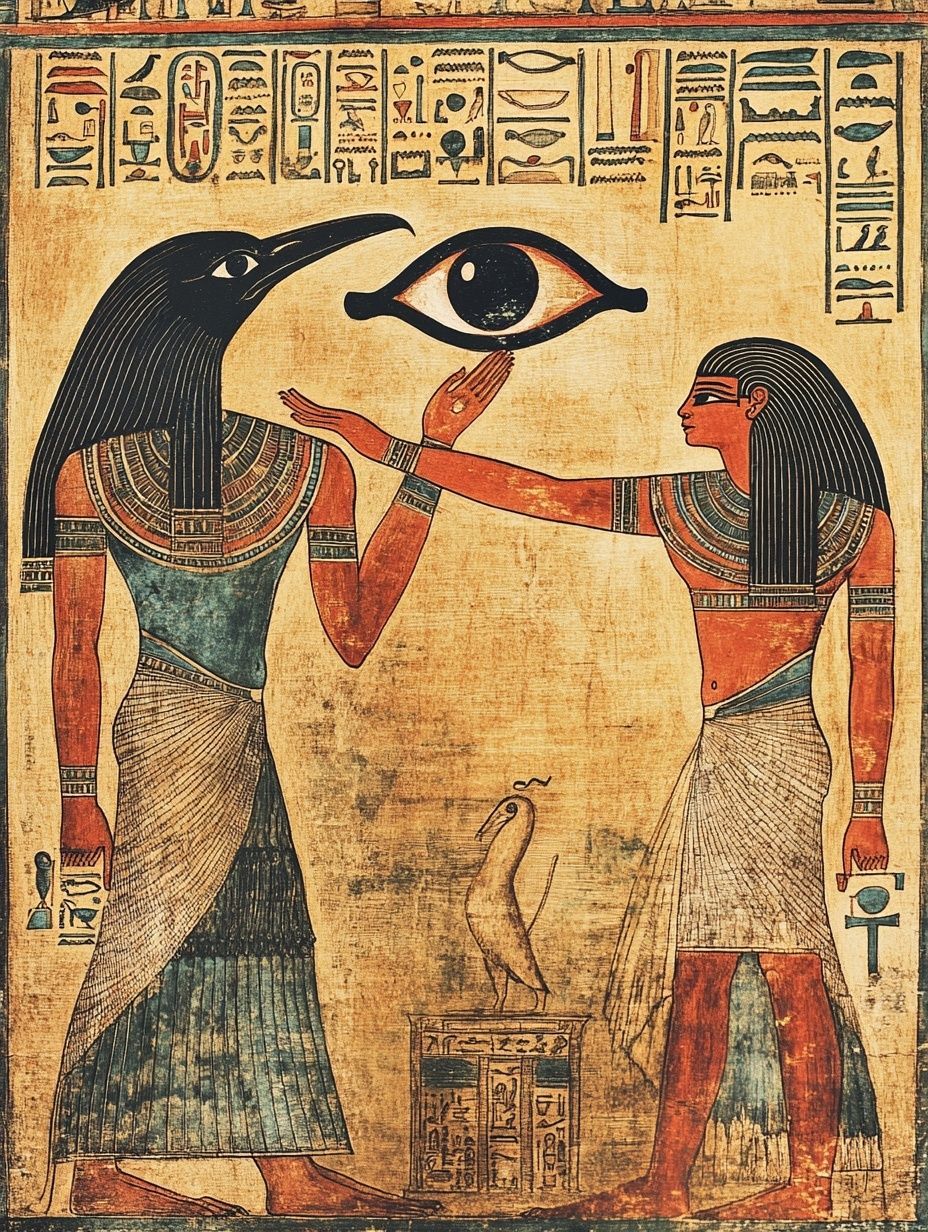
Ancient Egyptian lunar magic & rituals
Ancient Egyptian religious life was also deeply connected to the moon's cycles, which were marked by significant rituals and festivals.
- The Eye of Horus myth: The moon's changing phases were directly linked to this central myth. Horus, a sky god whose eyes were the sun and moon, had his lunar eye injured by Seth (a god representing chaos and disorder). The moon's waning (shrinking) phases symbolized the Eye's injury or destruction. Its waxing (growing) phases represented the Eye's healing and restoration, often attributed to Thoth (the god of wisdom and healing). The full moon marked the Eye's complete wholeness, while the new moon was seen as the start of this entire restorative cycle.
.
- Resurrection and renewal: Both the new moon and the full moon held strong associations with renewal and resurrection. Egyptians believed these specific times were powerful for revitalizing nature, the gods, and particularly for aiding deceased ancestors in their journey through the afterlife and ensuring their rebirth.
- Offerings to the deceased: On these sacred lunar festival days, special offerings were made to the dead, reinforcing the connection between the moon's cyclical return and the concept of eternal resurrection in the afterlife.
Greco-Roman lunar magic & rituals
Lunar deities like Selene/Luna and Hecate (Latin) or Hekate (the direct translation from Greek to Latin script) were central to Greco-Roman beliefs and practices concerning the moon.
- Hecate and crossroads: Hecate, goddess of magic, witchcraft and the underworld, was strongly linked to the moon's darker phases and to crossroads. At these liminal places, offerings (known as "Hecate's Suppers" or Deipnon) were regularly left to her during the dark phase of the moon, just before the new moon, seeking her aid in magical workings or protection. The first visible crescent of the new moon (Noumenia) also held significance for Hecate in later periods.
- "Drawing down the moon": Thessalian witches (women from the region of Thessaly in ancient Greece, infamous for their magical abilities) were famously accused of using spells to "pull down the bright moon". This act showed immense power, was performed for love spells, or to extract a magical "juice" from the moon. This was considered a form of manipulative magic, aiming to control divine forces.
- Divination: In Arcadia, young girls specifically invoked the moon to reveal their romantic destiny, seeking visions or signs of their future husbands. This practice highlighted the moon's perceived connection to fate and hidden knowledge, particularly in matters of the heart.
- Roman calendar rituals: The structure of the Roman calendar itself held lunar significance. The Kalends (first day of each month), Nones (ninth day before the Ides), and Ides (the middle of the month) were originally tied directly to the new, first quarter and full moon phases respectively, and involved specific religious rituals and public announcements presided over by priests.
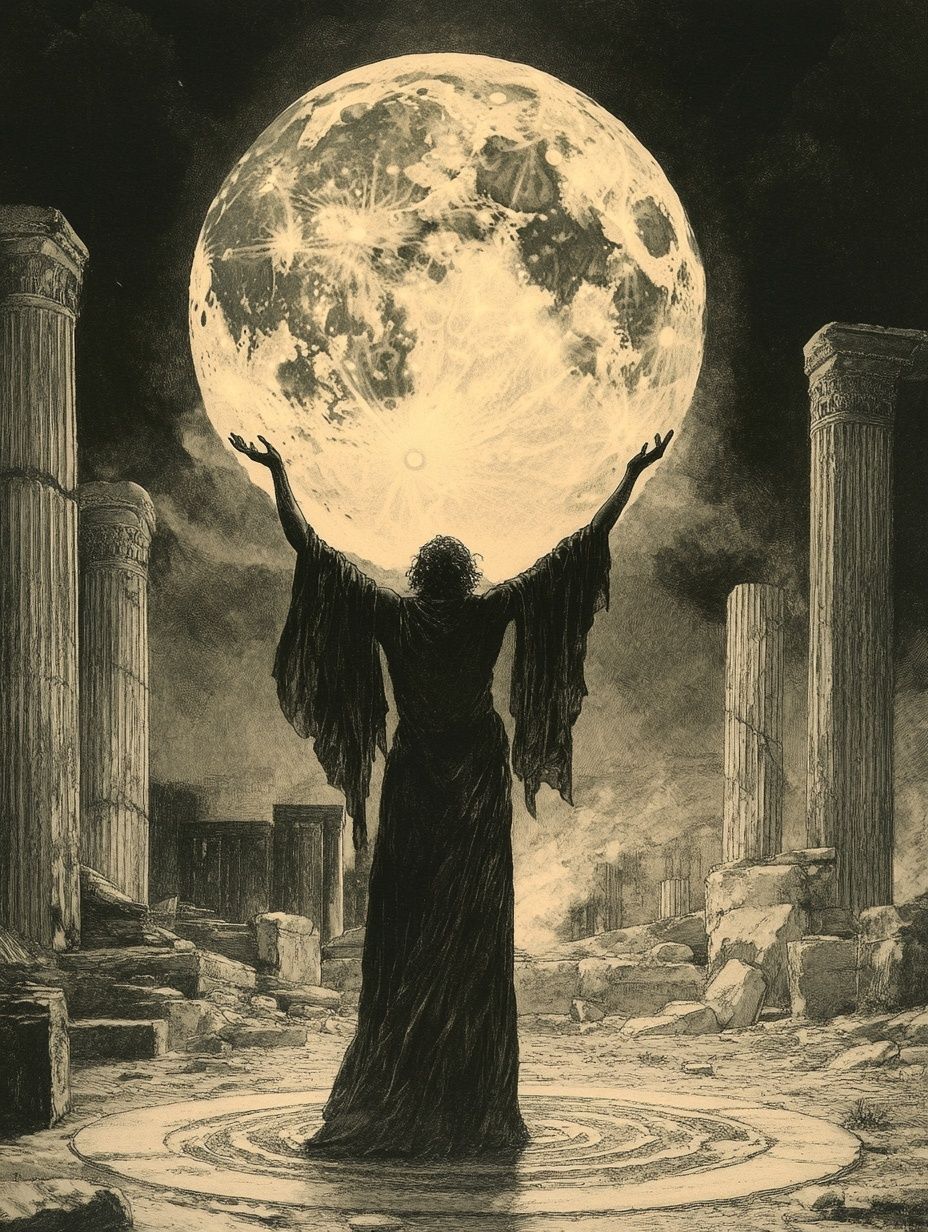
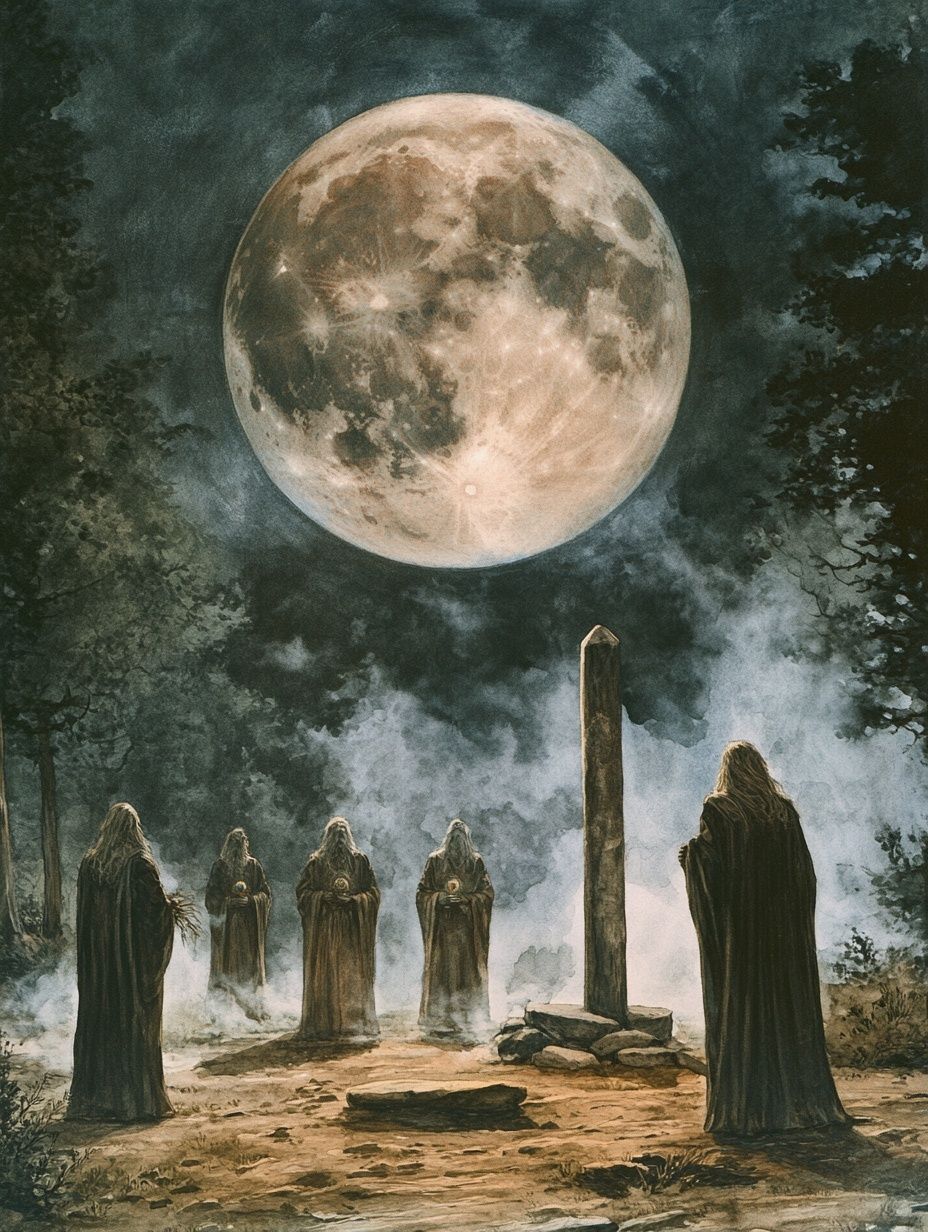
Celtic (Irish) lunar magic & rituals
Ancient Celtic druids deeply valued the moon, organizing their calendar and practices around its cycles.
- Prosperity rituals: On the new moon, people would turn coins in their pockets for prosperity. People were also more inclined to save money as the moon filled.
- Protective prayers: Upon first seeing the new moon, people would make the Sign of the Cross and offer prayers for health and wealth. Kneeling and praying to the new moon was a strong tradition.
- Healing beliefs: The waning moon was thought to cure ongoing ailments.
- Weather omens: A ring around the moon ("súil circe ré" or "hen's eye moon") meant bad weather. A sickle moon lying on its back also signaled "broken" weather.
Indigenous North American lunar magic & rituals
The moon, often called "Grandmother Moon," was a revered guardian spirit and a feminine entity governing women's periods, also known as "moontime." This "moontime" was seen as a sacred gift and a period of great power and spiritual cleansing.
- Moontime rituals: Women on their moontime were considered highly intuitive and could seek guidance from Grandmother Moon. They traditionally avoided preparing food or medicine, or participating in certain ceremonies, due to their heightened power.
- First moontime ceremony: Young women experiencing their first moontime were taken to a lodge by aunts or grandmothers to receive teachings about their new life and role.
- Community full moon ceremonies: These gatherings involved women of all ages in a circle, drumming, singing and offering tobacco to fire, praying for Earth's cleansing. They also made "moon water" for medicine.
- Seasonal moon names: Tribes used distinct names for each full moon (e.g., "Wolf Moon," "Strawberry Moon") to mark seasonal shifts and activities like hunting and planting.
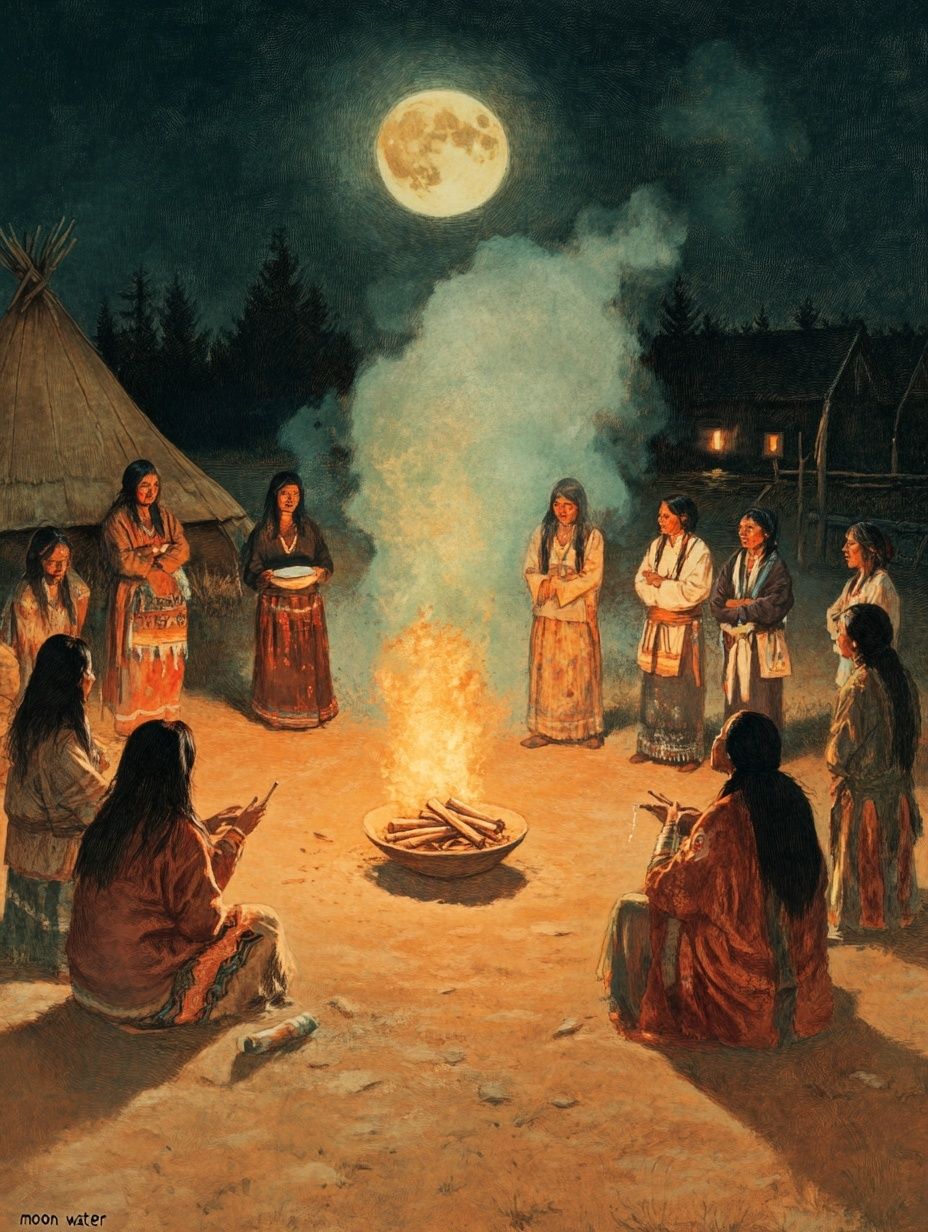
Want some vintage insight into dream divination, palm-reading & more?
Check out this Witches' Dreambook - a rare 19th century text!
(Clicking the link will open the Mythfolks Etsy shop in a new tab.)
Modern moon magic that's rooted in ancient wisdom
While today's practices are shaped by modern witchcraft (especially Wicca and neopaganism), many of them echo those ancient lunar traditions discussed above, where lunar deities and calendars were integral to spiritual life.
Below are some of the core
ritual forms used in contemporary moon magic (this is only intended as a general introduction, there is of course much more depth and specificity across different practices that I will explore in further articles!):
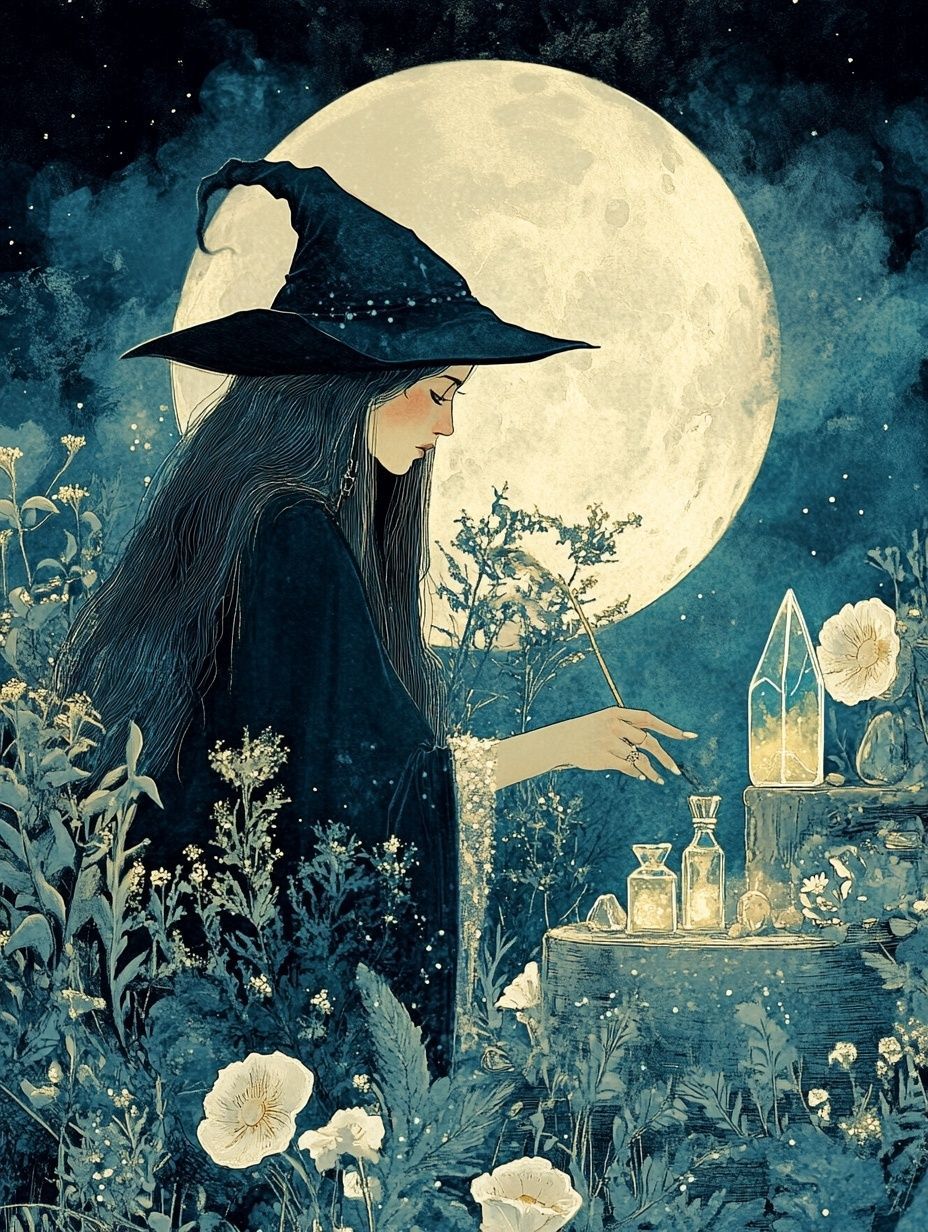
Moon altars
- Practitioners often build and maintain a lunar altar - a physical space dedicated to the moon's energy. This can include symbols like silver bowls (for water), white or black candles (for light and shadow), lunar deity statues, crystals and sacred herbs.
- Altars are refreshed with each moon phase, acting as a focal point for intention and ritual activity. They're both devotional and functional, used during spellwork, meditation or simply as a site of reflection.
Cleansing & purification rituals
- Cleansing is foundational. Before any spell or lunar work, practitioners often cleanse themselves, their tools, and space using methods like smoke (herbs such as mugwort or sage), salt, sound or moon water.
- Ritual baths are also common, using oils, herbs or crystals to purify the body and open energetic channels. These are especially popular during the new and full moons and may include chanting or guided visualization.
Moon Water Creation
- Water is charged under the moon (usually full moon) with specific intentions. It may be infused with herbs or crystals and is later used in spells, anointing, watering plants or added to baths.
- This practice stems from the belief that water, as a receptive element, holds the moon's energy and becomes a vehicle for transformation.
Lunar spellwork
- Spellcasting during specific moon phases involves candles, sigils, incantations, herbs or symbolic actions (e.g., burning paper, knot tying, burying objects).
- The ritual often begins with grounding, casting a circle, invoking lunar energy or deities and directing will through words or gestures. The goal is focused change - internal or external - in harmony with the lunar cycles.
Divination rituals
- Tarot, runes, pendulums, or scrying (e.g., reading the surface of a bowl of moon water) are commonly practiced during the full moon when intuition is believed to be strongest.
- These rituals typically involve centering, lighting candles, setting intention and interpreting messages received. They're seen as both spiritual insight and magical feedback loops.
Offerings & devotionals
- Practitioners may offer flowers, food, water or written prayers to the moon or lunar deities. This is often done at moonrise or outdoors under moonlight.
- These offerings symbolize gratitude, respect or a request for guidance. Unlike transactional prayer, they often serve to build a spiritual relationship with lunar forces.
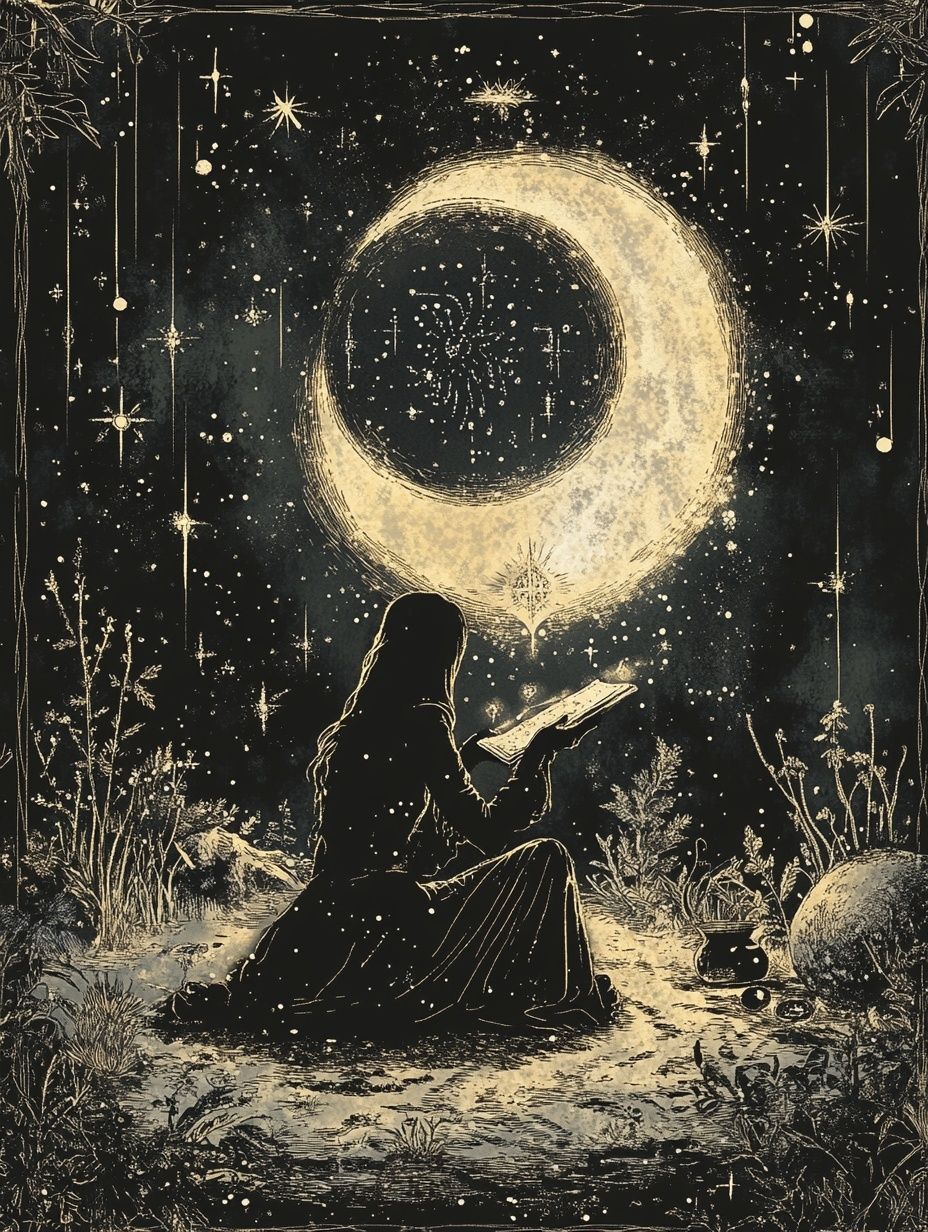
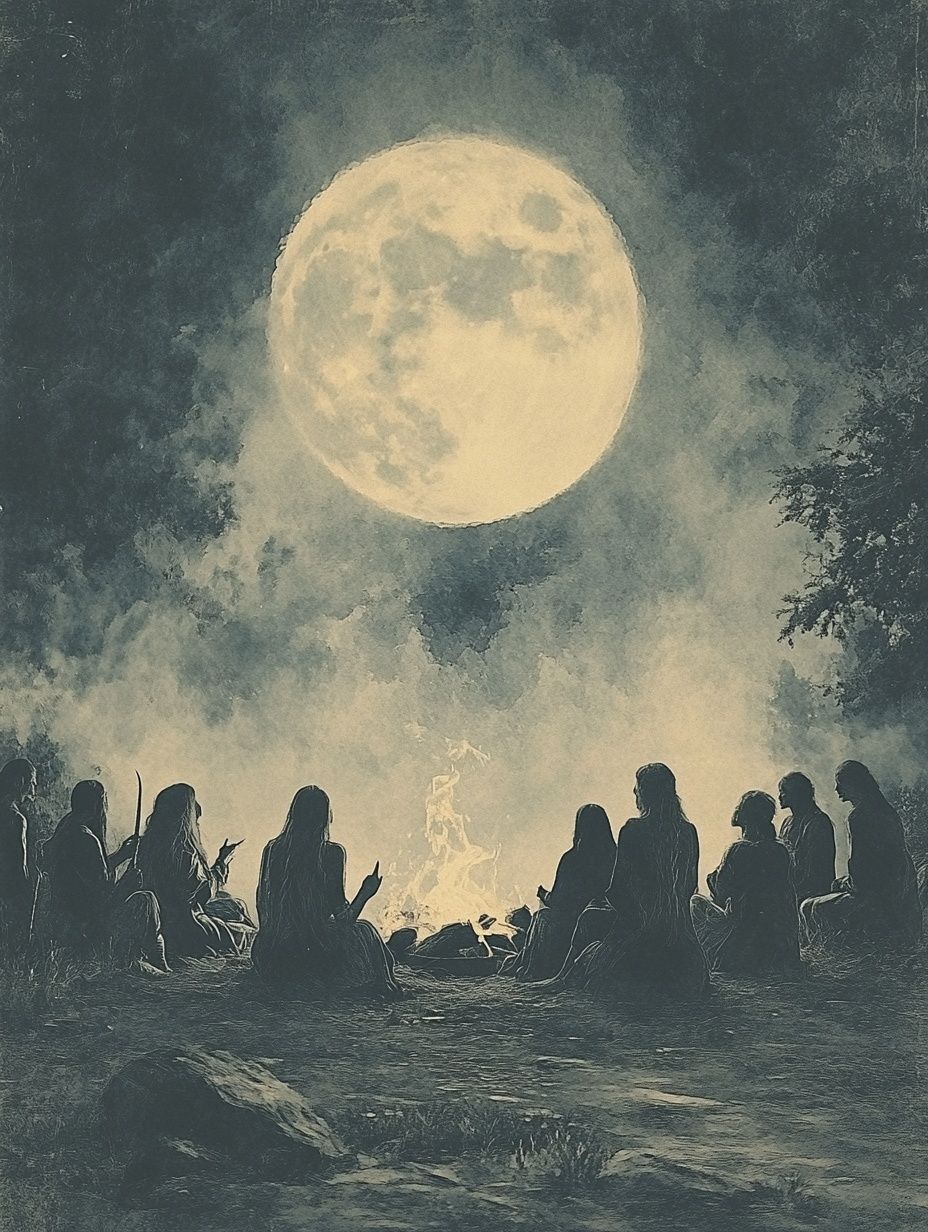
Journaling & intention setting
- Writing rituals are widely used - practitioners record intentions, emotions, dreams or magical work in a “Book of Shadows” or moon journal.
- Writing is itself a ritual: often done at a set time (e.g., new moon), sometimes accompanied by candlelight, herbs, or music to enter a meditative state. It serves both as a magical act and a record of spiritual growth.
Group rituals (Esbats)
- In covens or spiritual circles, moon rituals (especially full moons) are held communally. These include chants, circle casting, shared spellwork, and energy raising through dance or drumming.
- While solitary practice dominates today, group rituals continue a long lineage of lunar celebration as communal spiritual practice.
As we look back at how humans have sought the moon's influence, from ancient ceremonies to the quiet practices of today, it's clear that its magic isn't just a collection of old beliefs.
Instead, the moon has always offered something deeper: a consistent presence in our skies that mirrors the ebb and flow of our own lives. It speaks to our very human need for rhythm and connection in a world that often feels out-of-sync and disjointed.
And sometimes, we can all use a little magic in our lives.
Want to know more about the lunar gods and goddesses from around the world? Check them out here.
Article sources
- Rochberg, Francesca. The Heavenly Writing: Divination, Horoscopy, and Astronomy in Mesopotamian Culture. Cambridge: Cambridge University Press, 2007
- Harley, Timothy. Moon Lore. London: Swan Sonnenschein, Le Bas & Lowrey, 1885.
- Graf, Fritz. Magic in the Ancient World. Translated by Franklin Philip. Cambridge, MA: Harvard University Press, 1999.
- Moreux, Theophile, A Day in The Moon, London Hutchinson & Co., 1913
- Mackenzie, Donald A., Myths of Bablyonia & Assyria
- Ó hÓgáin, Dáithí. Myth, Legend & Romance: An Encyclopaedia of the Irish Folk Tradition. New York: Prentice Hall, 1991.
- Adler, Margot. Drawing Down the Moon: Witches, Druids, Goddess-Worshippers, and Other Pagans in America Today. Revised and updated edition. Boston: Beacon Press, 1986.
- Wilkinson, Richard H. The Complete Gods and Goddesses of Ancient Egypt. London: Thames & Hudson, 2003.
Shop vintage, digital folklore books about the moon
I spend a lot of time digging through old and out-of-print folklore texts and curate selected titles as digital editions.
I used these 2 books from the late 1800s as part of my research for this article and they're filled with fascinating details and stories only vintage books can bring.
I've given them new covers, tidied and compressed the original scans and repackaged them into a convenient digital download at a great price. Check out these lunar folklore texts here.
(Clicking the link will open the Mythfolks Etsy shop in a new tab.)
You might also like


